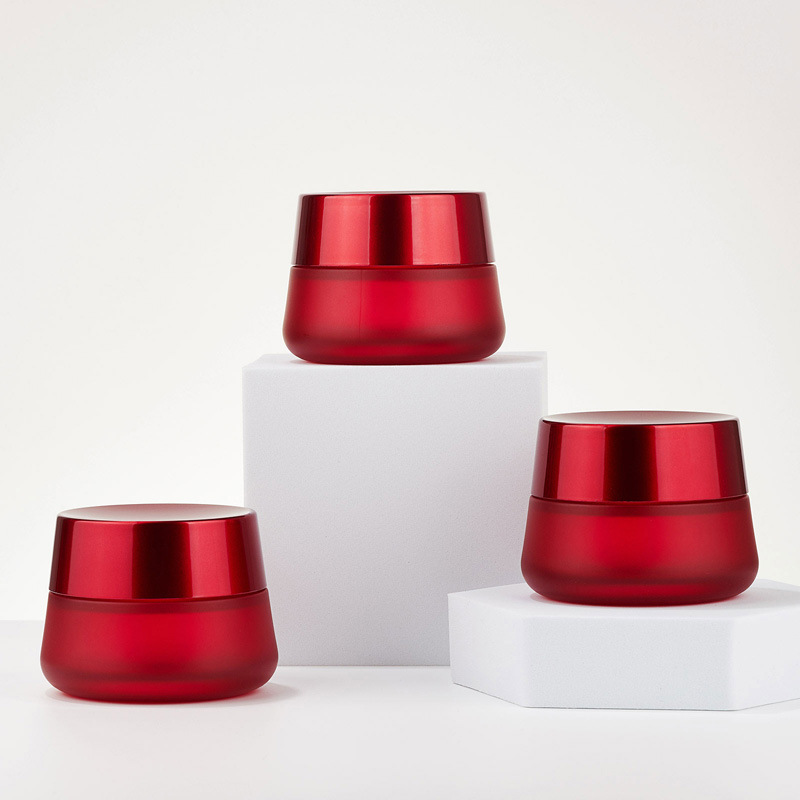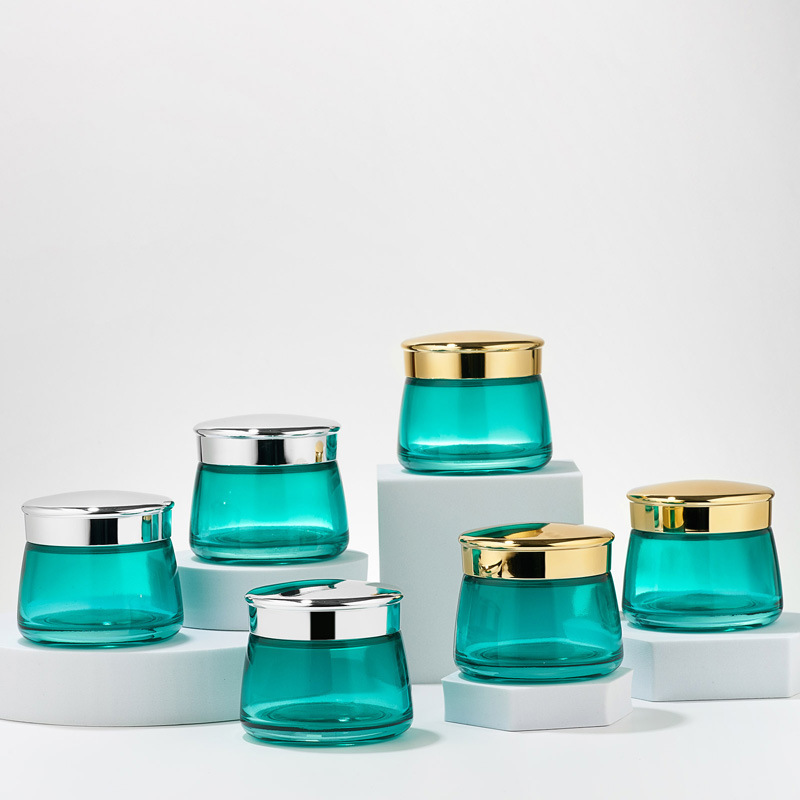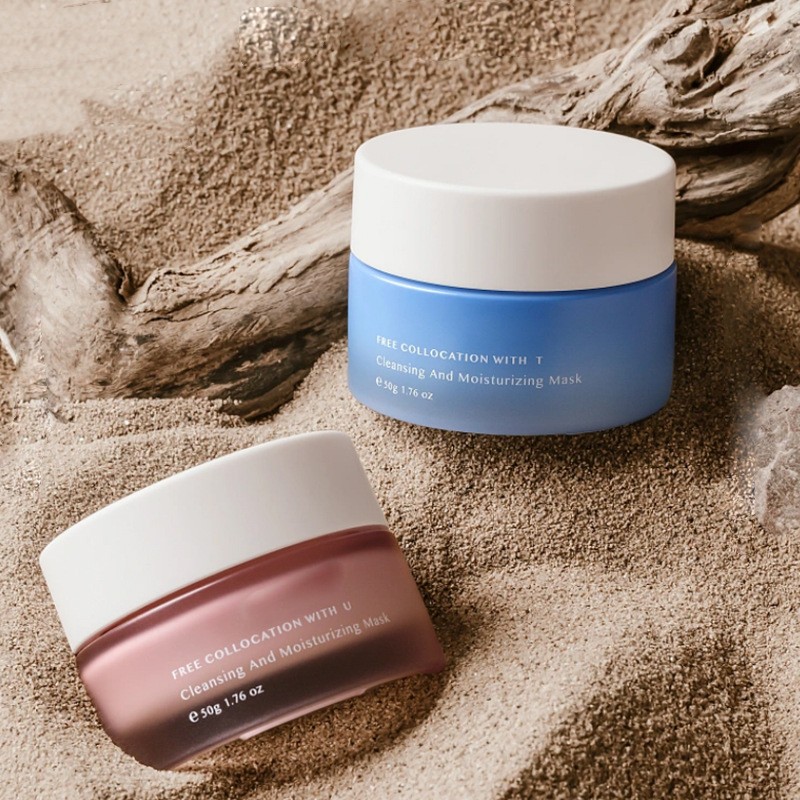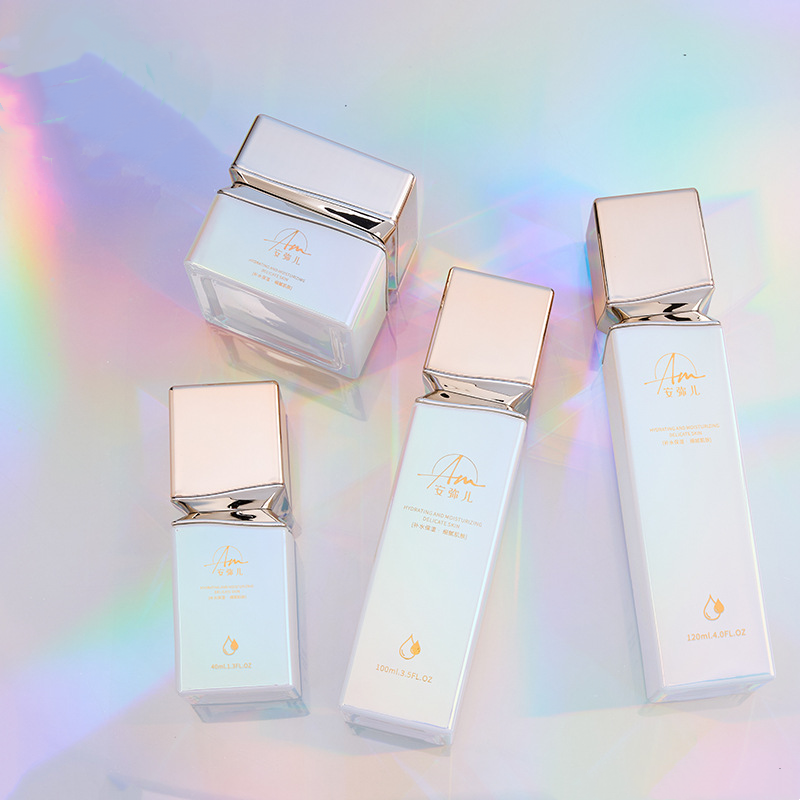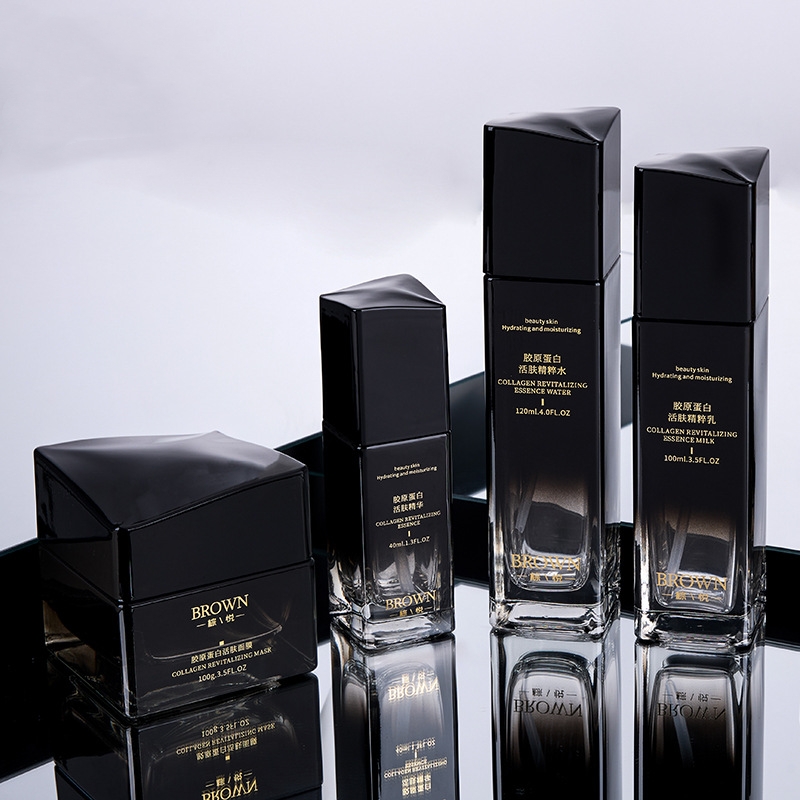Are glass cosmetic jars suitable for storing different types of cosmetics?
Analysis of the advantages of glass cosmetic jars
Strong chemical stability
Glass itself is not easy to react chemically with the contents, so it is a safe and reliable packaging option for many skin care products with high active ingredients (such as vitamin C essence, A alcohol products, etc.), which can effectively extend the shelf life of the product.
Good impermeability
Glass has good barrier properties for almost all gases and water vapor, which can effectively prevent the entry of external air and moisture, and avoid oxidation and deterioration of the contents.
High-end visual and tactile experience
Glass has a natural sense of weight and texture, especially after surface treatment such as spraying and hot stamping, it can greatly enhance the grade and visual appeal of the product. Therefore, many high-end brands prefer glass as the outer packaging material for perfume bottles and essence bottles.
Environmentally friendly and recyclable
Today, as the concept of sustainable development is becoming more and more popular, glass, as a recyclable material, has significant advantages in environmental protection.
Limitations of glass packaging
However, glass is not a "universal packaging" and has the following shortcomings in practical applications:
Strong fragility
The biggest weakness of glass is its fragility. During transportation, storage and use, glass bottles are prone to breakage, especially for cosmetics that need to be used frequently, such as face creams, cleansers, etc., which are not suitable for glass jar packaging.
Heavy weight and high transportation cost
Glass bottles are heavier than plastic bottles, which not only increases transportation costs, but also may bring additional burdens to carbon footprint management.
High manufacturing and processing costs
The production and surface treatment costs of glass bottles are generally higher than plastics, which limits their large-scale application in the field of mass cosmetics.
Analysis of the scope of application of glass cosmetic jars
Combined with the above characteristics, glass cosmetic jars are more suitable for the following product types:
High-concentration essence products: products that require good light protection, oxygen protection, and sealing.
Perfume and fragrance products: products that pursue visual and olfactory experience and require high-end bottles.
High-end creams, niche handmade brands: customized niche products that need to highlight the brand tone.
For the following product types, glass packaging may not be the best solution:
Daily basic skin care products (such as facial cleansers, lotions, large-capacity skin care water): more suitable for lightweight and anti-fall plastic packaging.
Travel and portable products: Plastic materials have greater flexibility and practicality.
Air pressure pump and vacuum pump products: Glass bottle processing is difficult to accurately match with complex structural components, while plastic is more plastic.
Does the use of glass cosmetic jars require special attention?
The core characteristics and advantages of glass cosmetic jars
As a classic material for cosmetic packaging, glass bottles or jars have the following advantages:
Strong chemical inertness: not easy to react with the contents, suitable for preserving active skin care ingredients, such as vitamin C, A alcohol, etc.
Good airtightness: effectively block air, moisture and microorganisms, and extend the shelf life of products.
Good visual effect: The transparency and texture of glass can enhance the overall product grade, and is suitable for high-end product lines.
Good environmental protection and recyclability: Glass, as a recyclable material, is particularly popular under the global trend of advocating sustainable packaging.
But even so, there are a series of risks and limitations that cannot be ignored in the use of glass materials.
Precautions for using glass cosmetic jars
1. Safety hazards caused by fragility
The most significant disadvantage of glass cosmetic jars is that they are fragile, especially in scenes such as bathrooms, travel, and falls. Once broken, not only will the contents be wasted, but it may also cause cuts to the user and damage to the ground. Therefore, it is recommended that:
In the product packaging design stage, add anti-shatter structure design (such as non-slip bottle bottom, rubber-coated shell, etc.);
Clearly mark the words "fragile";
For products whose target consumer groups are children or travel users, give priority to other safer materials, such as plastic or vacuum bottle packaging.
2. Heavy weight affects portability and transportation costs
glass cosmetic jars are generally heavy. If the product is positioned as portable and travel use, glass is not suitable. In addition, weight will also increase overall transportation costs and carbon emissions, posing a challenge to the brand's environmental commitment.
In this regard, Shaoxing Roman Plastic Co., Ltd. has focused on lightweight plastic packaging design for many years. Relying on more than 50 injection molding machines and 15 automated assembly lines, it can provide integrated services from design, proofing to mass production. We offer a variety of alternatives such as vacuum pump bottles and plastic jars, which are beautiful, lightweight and sustainable.
3. Surface treatment is easily damaged, affecting brand image
Although glass can achieve excellent visual effects through spraying, hot stamping, silk screen printing and other processes, its surface treatment may peel off due to scratches and friction during long-term use, affecting the appearance and brand aesthetics. Users should be careful to avoid collisions between glass cosmetic jars and hard objects, and avoid long-term use of unprotected glass bottles in humid environments.
Shaoxing Roman has rich technical accumulation in surface treatment. We are proficient in UV coating, silk screen printing, thermal transfer and other processes, and can even achieve high-gloss texture imitating glass on plastic materials, providing customers with both beautiful and durable packaging options.
4. Sealing depends on the bottle cap design and is easily overlooked
Although the glass bottle itself has good airtightness, if the bottle cap design is unreasonable, it may also cause leakage or contamination. Especially for canned creams, paste products, etc., if they are exposed to the air for a long time, the active ingredients are easily oxidized, and the user experience will also decline.
In this regard, Shaoxing Roman provides integrated customization services from bottle body to bottle cap, assisting customers in developing highly sealed cap structures, such as embedded leak-proof gaskets, vacuum structure bottle caps, etc., to ensure the long-term stability of the contents.
Are glass cosmetic jars suitable for long-term storage?
Analysis of long-term storage characteristics of glass materials
1. Strong chemical inertness and good antioxidant properties
Glass is made by high-temperature smelting of natural minerals such as silica sand. Its molecular structure is stable and it is not easy to react chemically with acids, alkalis or organic components. This means that for some highly active ingredients that are easily contaminated by air or containers (such as vitamin C, fruit acid, essential oils, etc.), glass materials have an absolute advantage in chemical stability. This inertness also makes glass very suitable for long-term storage, which can effectively prevent the contents from being "absorbed" or "migrated" by packaging materials.
2. Good airtightness and barrier properties
Compared with plastic materials, glass has stronger barrier properties. It can effectively prevent oxygen, water vapor, and ultraviolet rays from invading the contents, thereby reducing the oxidation rate and delaying the deterioration of the contents. Therefore, high-concentration skin care essences, oil products and functional cosmetics have better preservation effects when stored for a long time using glass packaging.
3. Impermeable and non-aging
Plastic materials may volatilize in small amounts, age and even degrade during long-term storage, thus affecting product quality. Glass, on the other hand, does not have permeability or chemical aging problems, and its physical properties remain stable for a long time, so it is particularly suitable for cosmetic products with a long shelf life and high stability requirements.
Risks and precautions of glass packaging in long-term storage
Although glass has excellent preservation properties, there are also some issues that need to be paid attention to in long-term use:
1. Fragility, increased storage risk
The brittleness of glass is one of its biggest flaws. During transportation, handling or long-term storage, a slight impact may cause breakage. Especially in a humid or temperature-sensitive environment, the glass is affected by thermal expansion and contraction, and its compressive resistance decreases, with the risk of bursting.
Therefore, for brands with long-term inventory needs, they should focus on the structural design of glass containers and the setting of outer packaging buffer layers to reduce the risk of breakage.
2. The sealing of the bottle cap determines the actual preservation effect
Although glass itself has good airtightness, its preservation performance depends largely on the sealing of the bottle cap. If the bottle cap is not designed properly or is not sealed tightly, the contents will be damp, oxidized, and even breed bacteria, which will affect the product quality. Therefore, the overall preservation performance of glass packaging should be comprehensively evaluated based on the matching quality of the bottle body and the bottle cap.
Shaoxing Roman Plastic Co., Ltd. is experienced in the development of product supporting structures and can provide customers with customized solutions for glass bottles and highly sealed plastic bottle caps, effectively improving the overall preservation ability of the packaging.
Glass vs. plastic packaging: long-term preservation performance comparison
Although glass has advantages in airtightness and stability, plastic packaging cannot be ignored in long-term preservation, especially with the development of technology:
Multi-layer plastic bottles (such as oxygen barrier layer material EVOH): Through technological upgrades, barrier properties similar to glass can be achieved;
Vacuum bottle structure: effectively prevent air from entering and slow down the oxidation rate of the contents;
Anti-ultraviolet coating: Plastic bottles can be stored away from light through UV spraying and other methods.
Since its establishment in 2016, Shaoxing Roman Plastic Co., Ltd. has been committed to the research and development and optimization of plastic cosmetic packaging. It has more than 50 injection molding equipment and multiple automated assembly lines, and can provide a variety of long-term storage packaging solutions that can replace glass, including vacuum bottles, airless pump bottles, and high-barrier plastic jars. In terms of surface treatment technology, the company has mastered a number of advanced technologies such as spraying, UV coating, silk screen, and hot stamping, which not only ensures the sealing performance of the product, but also gives it a fashionable and high-end visual expression.


 English
English Español
Español